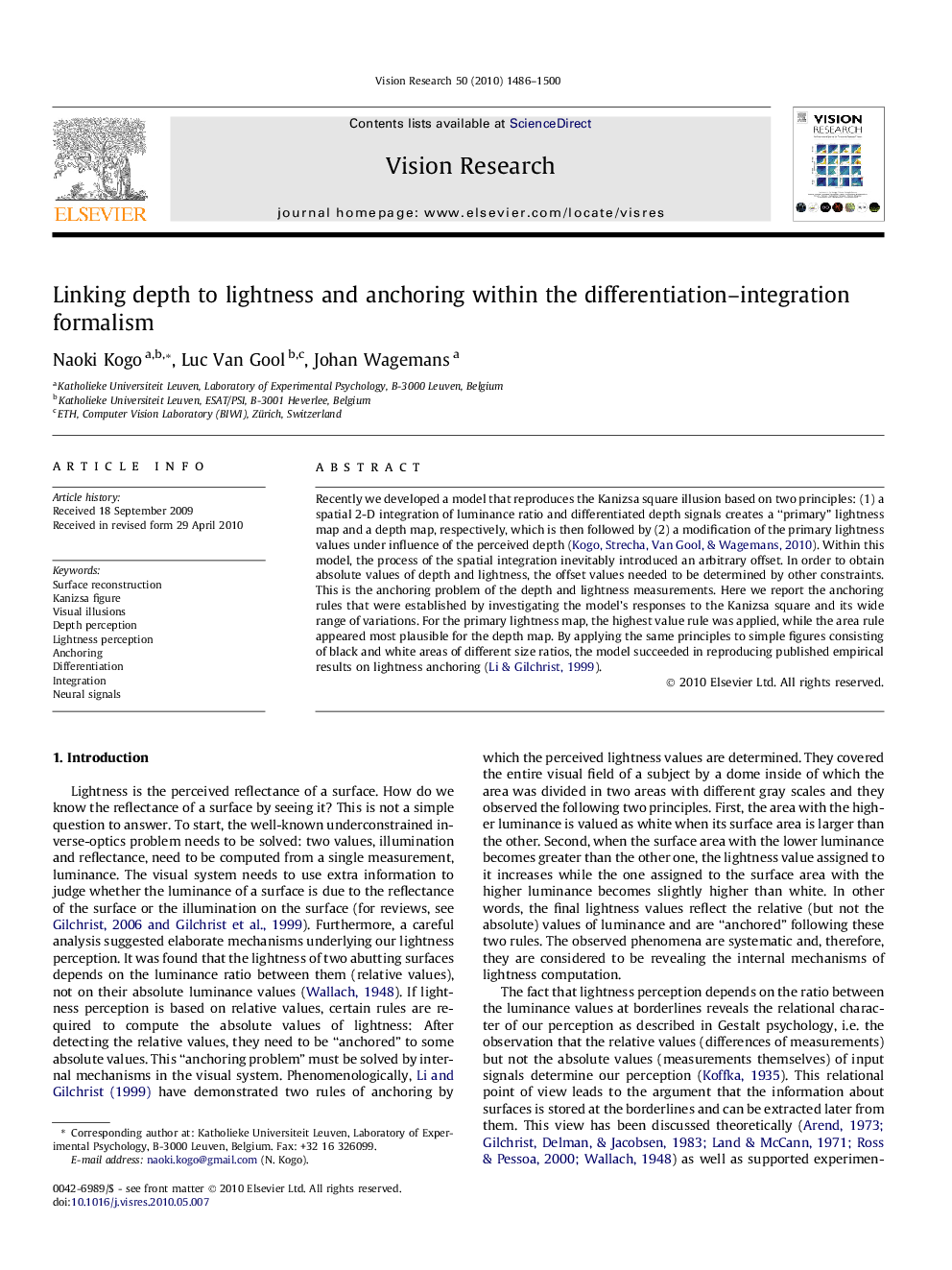| کد مقاله | کد نشریه | سال انتشار | مقاله انگلیسی | نسخه تمام متن |
|---|---|---|---|---|
| 4034636 | 1263470 | 2010 | 15 صفحه PDF | دانلود رایگان |

Recently we developed a model that reproduces the Kanizsa square illusion based on two principles: (1) a spatial 2-D integration of luminance ratio and differentiated depth signals creates a “primary” lightness map and a depth map, respectively, which is then followed by (2) a modification of the primary lightness values under influence of the perceived depth (Kogo, Strecha, Van Gool, & Wagemans, 2010). Within this model, the process of the spatial integration inevitably introduced an arbitrary offset. In order to obtain absolute values of depth and lightness, the offset values needed to be determined by other constraints. This is the anchoring problem of the depth and lightness measurements. Here we report the anchoring rules that were established by investigating the model’s responses to the Kanizsa square and its wide range of variations. For the primary lightness map, the highest value rule was applied, while the area rule appeared most plausible for the depth map. By applying the same principles to simple figures consisting of black and white areas of different size ratios, the model succeeded in reproducing published empirical results on lightness anchoring (Li & Gilchrist, 1999).
Journal: Vision Research - Volume 50, Issue 15, 9 July 2010, Pages 1486–1500